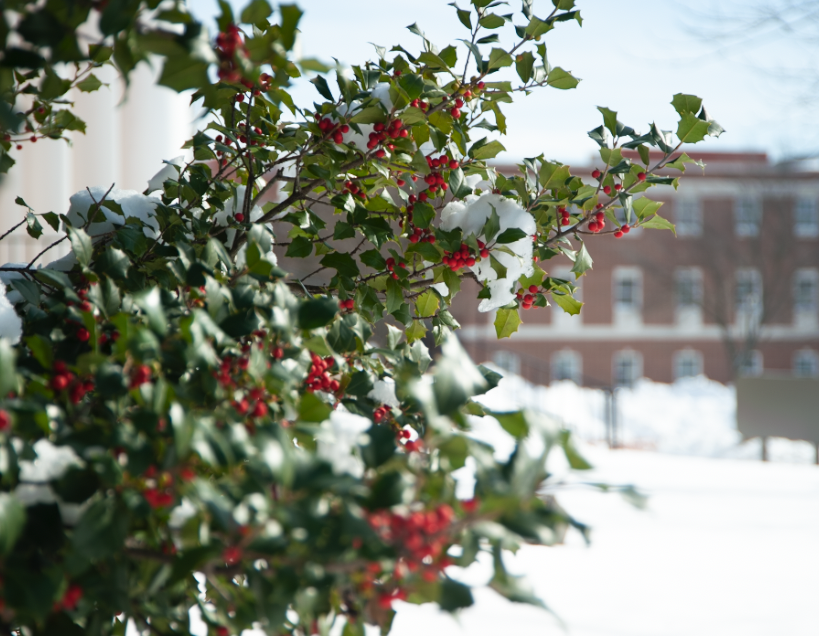
Fact Sheets And Publications
- Health & Well-being
-
Agricultural Programs
- Agribusiness
- Animal Science
- Beginning Farmer Program
- Commercial Crops
- Commericial Horticulture
- Delaware Soil Testing Program
- Disease Management
- Farm Vitality and Health Project
- Irrigation
- Nutrient Management
-
Insect Pest Management
- Insect Trapping Program
- IPM Hot Topics
- Commercial Field Crop Insect Management
- Commercial Field Crop Disease Management
- Commercial Fruit & Vegetable Crop Pest Management
- EIPM Implementation Projects
- Pollinators
- Research and Extension Demonstration Results
- Brown Marmorated Stink Bug (BMSB) Management, Research, and Resources
- Publications
- Pesticide Safety Education Program
- UD Plant Diagnostic Clinic
- Variety Trials
- Weed Science
- Certified Crop Advisor Program
- Poultry Biosecurity
- 4-H
-
Horticulture
- Climate Variability and Change
- Delaware Soil Testing Program
- Forestry
- Lawn and Garden
- Master Gardeners
- Master Naturalist Program
-
Nutrient Management
- Nutrient Management Certification
- Continuing Education for Nutrient Management
- Nutrient Management Planning Resources
- Commercial Nutrient Handler Resources
- Poultry Litter and Manure Management
- Turf Management
- Agriculture Notebook
- Horticulture Handbook
- Agriculture & Horticulture Handbooks
- Crop Production
- Soil Fertility
- Delaware Climate Change Coordination Initiative (DECCCI)
- Salt Impacted Agricultural Lands

AMERICAN HOLLY, DELAWARE’S STATE TREE
Shirley Duffy is a recent transplant to Delaware who is proud of her new state. And as an avid gardener, she knew just the way to show her state pride — by planting an American holly in her Newark yard.
The American holly (Ilex opaca) has been the state tree of Delaware since 1939. Back then, the holly was an important cash crop to the state, says Carrie Murphy, a horticulture agent with University of Delaware Cooperative Extension.
Holly grew in abundance in the wild, particularly in Sussex County. Savvy entrepreneurs, such as Milton fertilizer salesman Charles C. Jones Sr. recognized that there was money to be made from this broadleaf evergreen. He began shipping wreaths and other holly products throughout the U.S. and abroad. By the 1930s, Delaware had become the leading supplier of holly in the nation. The town of Milton produced more holly wreaths and decorations than any other town in the world.
Holly grew in abundance in the wild, particularly in Sussex County.
-

With the advent of artificial decorations, as well as wage law requirements for piecework businesses, the state’s commercial holly industry declined and ceased entirely by the 1960s. These days, the only holly harvesting in Delaware is in backyards like Duffy’s. A UD Master Gardener, Duffy likes to take holly cuttings throughout the winter, not just at Christmas time.
“I use holly for both indoor and outdoor arrangements,” says Duffy. For an easy but eye-catching decoration she arranges cut holly boughs down the length of her dining room table.
Ed Stevenson, a Master Gardener who lives in North Wilmington, also turns to the hollies in his yard for seasonal decorations. However, he uses holly judiciously because it does have a few downsides.
“We cut holly branches and use them for a Christmas table centerpiece,” says Stevenson. “However, once holly is cut, the leaves start to shrivel and the berries slowly darken. The branches should either be cut close to Christmas, or, if they are cut earlier and show signs of aging, they can be replaced with newly-cut branches.”
“Because we expect our Christmas door wreath to last about a month – early December through mid-January – we don’t use holly in it. Also, keep in mind that the sharp leaf spines of the holly can scratch wood finishes so don’t put it directly on wood,” he says.
Article by Margo McDonough
Originally published Nov. 28, 2012 in the UD Extension Blog and recirculated in UDaily.
UD Cooperative Extension
This institution is an equal opportunity provider.
In accordance with Federal law and U.S. Department of Agriculture policy, Cooperative Extension is prohibited from discriminating on the basis of race, color, national origin, sex, age, or disability.
The University of Delaware is an Equal Opportunity Institution and Provider. Visit UD’s Office of Equity & Inclusion to learn more.
Additional Links
531 South College Avenue Newark, DE 19716 (302) 831-2501
